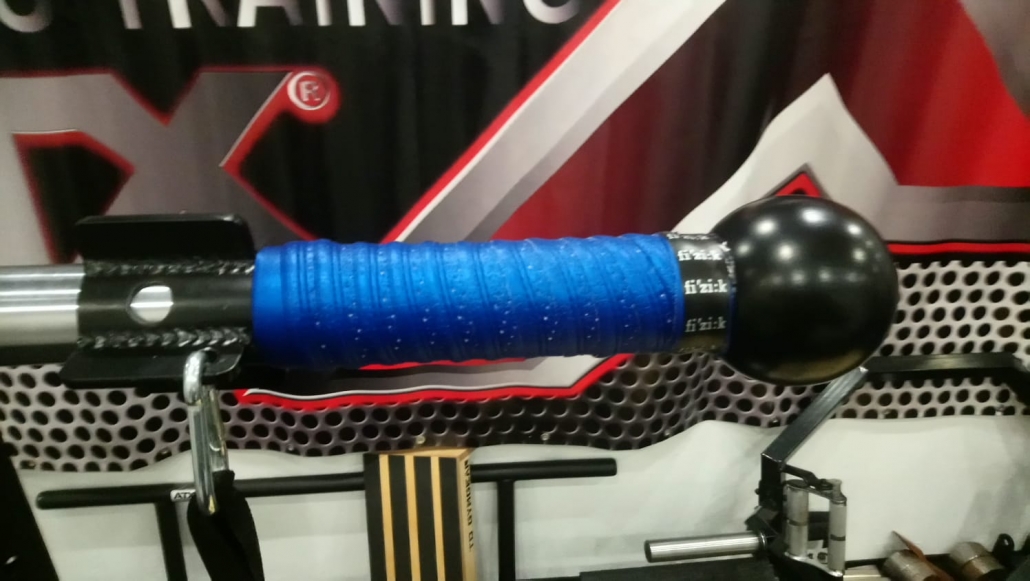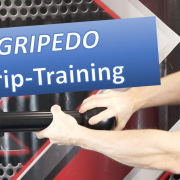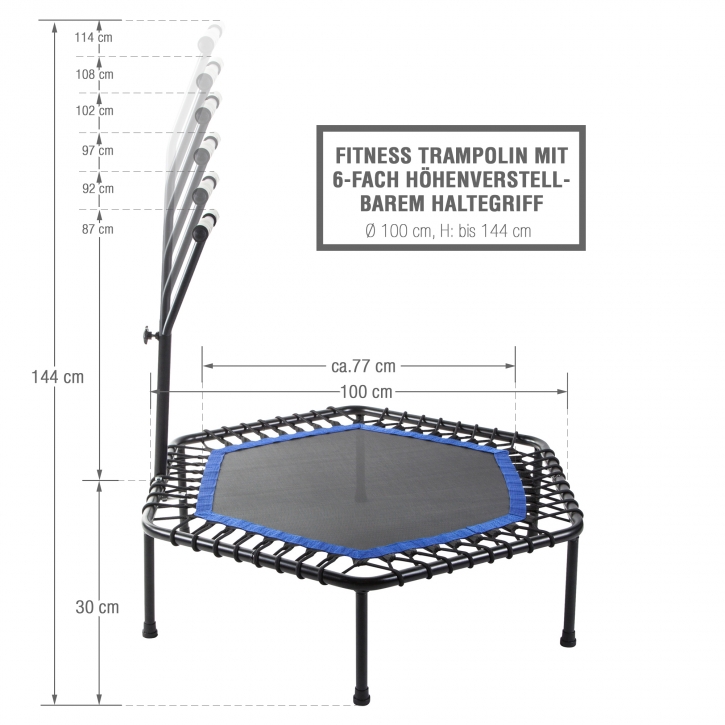Gripedo [Advertisment/] is a great Strength-Training tool for developing some serious grip strength. It’s easy to attach to standard Olympic (or other) Barbells (with 50mm holding ficture) or can be used “old school” in a bucket of sand!
This “cool tool” offers you a bunch of different grip options for developing some gorilla-like grip. Learn how to use it properly and how to integrate it in your training routine to get the most bang for your buck!
If you wish to master hand strength [Affiliate Link] think about getting your hands on this tool and soon you won’t need to use a wrench anymore 😉 From wrist rolling over single handed deadlifts or rowing exercises.
This tool will definitely bring you back some flair of the “good old gym days” where people used to blacksmith their forearms with real steel and not only their thumbs by posting gym selfies and tapping on their smartphones 😉
The story behind the Gripedo
The word „Gripedo“ comes from grip + torpedo = Gripedo, which is also illustrated by its cool shape.
It was invented by Emre Bardakci, a Biomedical Engineer with 25 years of strength training and experience in martial arts. The original concept of this tool has its roots in rehabilitation but, over time, grew to a strength training product with a huge variety of usage.
Emre told me that he obtained Bachelors and Masters in Biomedical Engineering with some focus in Biomechanics. He pursued these degrees due to his passion for Martial Arts, Strength training and human movement. He has a black belt in judo, won a Silver Medal in Sambo US Open 2017 and trained martial artist from different backgrounds. So he seems to walk the walk instead of only talking the talk!
Emre furthermore says:
“Gripedo in the sand application is mainly a concentric exercise and is great for conditioning the hands, wrists, forearms and the arm musculature as a whole. This helps athletes with having strong, long lasting that does not easily fatigue during competition. The sand application can also be a great rehabilitation, active recovery, injury prevention tool. With the use of the pin, the Gripedo can be attached to pull up bars, sleds, loading pins which enable the user to do pull ups, deadlifts, goblet squats, etc.”
Having talked to Emre multiple times about his tool he moreover told me the following:
“The Gripedo sand application is great for building strength and endurance. The Gripedo slips on to an olympic barbell for wrist/forearm rolls and supination/pronation exercises while gripping the ball handle. Gripedo is a functional strength tool to train the hand, forearm and finger strength with many uses.”
Why should you have a stone crushing strong grip
Ok, when it comes to grip training, for me it’s more than just an optical thing. Of course any kind of proportional hypertrophy/muscular body looks nice and strong. But big muscles aren’t necessarily strong. Strange, but this is still confusing people although it’s absolute basic knowledge how to distinguish between strength and muscular hypertrophy.
This article is not intended to discuss this topic in detail. Only a very short reminder:
Strength is mainly a neuronal adaptation (intramuscular). It involves your so-called Central Nervous System (CNS). Muscular Hypertrophy describes how to enlarge muscle fibers in size.
To make a complex story short: Strength is how much weight you can lift (high training-intensity, low training )volume, whereas muscular hypertrophy is more about Bodybuilding kind of stuff (moderate intensity, more volume).
Takeaway for Training: If you want to increase muscle size try to lower the weights more slowly. If your goal is to increase strength, focus on the lifting part of the weights.
So, mastering hand strength is probably a “dying art”. Ask yourself, when was the last time you saw someone doing forearm training in a commercial gym? Yes, there might occur some wrist curling here and there, but that’s probably all.
In times of Social Media where a good training seems to only happen if you post it on some account it’s no wonder that good old-fashioned training is no longer “appropriate”. In Gyms where you aren’t allowed to make sounds while e.g. performing heavy deadlifts or behind the neck press there won’t be some buckets full of sand to get a skull crushing grip 😉
But let’s move back to blacksmithing your forearms. Having a strong grip is crucial as the hand(muscle) is the angle point where the load of the force (weight) is transferred to the upper extremities.
You might have heard the proverb that a “chain is only as strong as its parts”. So if your arms are strong or your back might be strong, you might be able to lift a certain amount of weight, but if your hands open you’ll lose contact!
No problem, I’m just using lifting straps you might think. But I encourage you to think again! Lifting straps might work if you perform lift specific exercises, like deadlifts. But if you want to create a transfer effect to a special sports, e.g. any kind of Martial Arts, Climbing or Law-Enforcement (where you need to grip enemies, guns etc.) you simply cannot use straps.
What you need is a strong grip! Same for “normal” people in a non-sport related environment. Think of your grandma trying to grab a suitcase on her own, opening a jar or whatsoever. Being self-sufficient is important, if you might live alone.
If you have clients (even beginners or elderly people), encourage them to (re)master their hand strength. According to studies, hand strength is a more accurate predictor for overall health than your systolic blood pressure![1] It’s therefore seems to provide clues to heart health[2]
How to measure hand strength
Ok, you might think. Cool, but how do I measure hand strength and what do I do with the data? Simply compare it to other days and look for improvement. Yes, but you can also use it as kind of predictor whether to train or not!
For measuring grip strength you can simply use a hand dynamometer [Affiliate link].You might get some on Amazon but you can look for better ones in medical supply stores as well.
Here’s how to use it:
- Measure your strength by gripping the Dynamometer (after a couple of rest days)
- Do it in the morning after getting up
- Grip it (standing) with your dominant hand (opposite food slightly forward)
- Raise your hand overhead and while lowering the arm squeeze the Dynamometer as hard as you can
- Repeat with your other hand
- Record your results
I learned this simple technique by my mentor Charles R. Poliquin who was also known as “Strength Sensei” (R.I.P.)
He also recommended me to test every morning, at least when you’re planning to work out that day.
If your grip strength is below 2kg or more (compared to the day before) your CNS hasn’t recovered properly and you should better take another day off. If your grip increased e.g. over 4kg Charles said you’re good to go, maybe even for a maximum effort day and some PRs.
So keep this simple trick in mind how to determine if someone’s ready to lift heavy or better to take another day off. It’s not only about how hard you work but how smart!
The muscles of the forearms
So, when it comes to training of the forearms, what actually can you train here? Let’s have a closer look:
Your forearms consist of basically two different compartments. The flexor- and the extensor compartment. A more medical term would be a ventral/anterior and dorsal/posterior compartment.
That means, if you want to flex your forearm you use the anterior/ventral compartment and if you extend your forearms it’s the posterior/dorsal compartment which does the job.
In order to move muscles, they must be innervated, by nerves. This is important as an improper movement function in muscles may be an issue of blocked/crushed nerves!
Therefore it’s good to know which nerve gives electrical power to which compartment. Just keep in mind, that’s basically the so called radial nerve, which innervates the posterior compartment and the median and ulnar nerves, which innervate the anterior part.
Why do I tell you these things of basic anatomy? Because I think it’s important to know which muscles work, cause if you have a deeper knowledge of their function you can design a well-structured and efficient training program, using grip tools like the Gripedo [Advertisment Link] instead of just doing “some grip work”.
I know, that this might be a bit “boring” but let’s see how things are working in your forearms before we move on to some exercises you can perform for grip training.
If you’re completely new to strength training related anatomy I recommend you to buy this book [Affiliate Link] and learn some new stuff.
Forearm Flexor compartments
The flexor compartment of your forearms consists of the following muscles (including their function). I’m not including all of them, just the most important ones to give you a little overview.
Again, if you want to have a deeper knowledge, take a look at “Strength Training Anatomy”[Affiliate Link].
- M. pronator teres –> pronates the forearm and does some light elbow flexion
- M. carpi radialis –> flexes the forearm, flexes the wrist and does abduction
- M. flexor carpi ulnaris –>flexes the wrist and does a strong adduction
Forearm Extensor compartements
If you can flex the forearms – of course – you have some antagonists which perform the job of extension. Let’s have a short basically overview here as well:
- M. brachioradialis –> does elbow joint flexion
- M. extensor carpi radialis longus –> performs a dorsiflexion and abduction
- M. extensor carpi radialis brevis –> same as above
- M. extensor carpi ulnaris –> does wrist extension and adduction
- M. ancaneus –> lets you extend your elbow
Now we have taken a look at some (very basic) human anatomy of the forearms. If we know now how things are moving, we can figure out some workout routines, to make them stronger!
Gridpo excercises – Which & How to integrate ?
The “Original Gripedo” comes as 4 inch diameter Ball Handle. For those of you who (like we Germans) stick to the metric system, it’s a about 5,5 cm in diameter for the pipe (so it will fit perfectly on any 50 mm Barbells) and about 12 cm in diameter, for the Ball on the edge.
In this video [Advertisment/Werbung] I do show you some basic exercises with the Gripedo. Of course there are lots of other possibilities. Just be creative!
You can use the Gripedo e.g. as a “wrist roller”. This is a classic way of training forearms, but this time with a 5,5 cm diameter! Performing this “re-gripped” version of a classic exercise is very versatile, as you can roll up and down. Furthermore you can easily adjust the weight, e.g. using even tiny friction plates for the “perfect” weight.
Furthermore you can perform a variation of a single handed Deadlift. Just attach some weight (preferably loading pins) with a carabiner to your Gripedo and…give it a grip!
If you don’t have access to loading pins go and perform it on a cable tower. There you can also use the Gripedo for single-handed rowing exercises, triceps extensions and even more. Use your phantasy!
Are there any downsides of the Gripedo?
To be honest – in my point of view – there are no real “downsides”. But as a coach I do always look for things to improve. Having used the Gripedo for quite some time now I do really like it and include it in almost each of my own workouts. Just 10 minutes of additional grip work after the main part is done.
The only thing I’d improve would be some kind of knurling on the tool which would enable you a “better” grip. Cause if you have sweaty hands you might slip from the rather smooth surface of the Gripedo.
Of course you might use some chalk but I wouldn’t be a smart strength coach if I didn’t come up with some new and “out of the box” ideas to solve this problem (which isn’t a real problem, cause there are no problems).
A client of mine is a hardcore biking (cycling) professional. He told me about some special bike tapes, which are used for racing bikes. If you get one of these (available in different colors) you can wrap it around your Gripedo and, voilà! (see picture)

If you want to know how to handle a tennis elbow or a golfer’s elbow, read my article.
Unfortunately the Gripedo doesn’t come with a rope to attach some weights on. But it does include a large splint which you can use to attach lifting straps on to. With this cool possibility you can use the Gripedo for vertical gripping and even attach it to any kind of cable.
Conclusion
When it comes to grip strength there’s only one possibility in my opinion: “a strong grip is never a weakness”, and there is no such thing as a too strong grip!
But there is certainly such a thing as a too weak grip. Improving gripping power not only improves probably all your upper body lifts, but also seems to be an indicator for overall health, cardiovascular risks and even general mortally!
Measuring grip strength with a dynamometer can be integrated in your morning routine, not only for coaches in order to determine how good your CNS has recovered from a hard workout and if you’re ready to lift again or better take another day off.
In my point of view the Gripedo is a tool to invest in. It’s durable and probably will last you a whole life long. Although it doesn’t include a rope or carabiner it comes with a splint which adds a nice bunch of further exercises to perform with, e.g. cable rows, vertical grip training or variations of one handed deadlifts!
If you like this article please share it with your friends and leave a comment.
Author: Bernd Stoesslein, MBA in Sportsmanagement, “Heilpraktiker” (naturopath/complementary and alternative medicine practitioner).
Literature:
[1] https://www.bmj.com/content/361/bmj.k1651
[2] https://www.health.harvard.edu/blog/grip-strength-may-provide-clues-to-heart-health-201505198022
Disclaimer: This article is for information purpose only! Additionally, it should be clear that I’m not making any guarantees or promises regarding the accuracy, reliability or completeness of the information presented. Before you start this training program consult a physician/medical doctor etc. The information provided in this blog post is not intended to be a substitute for professional medical advice, diagnosis or treatment. Never disregard professional medical advice, or delay in seeking it, because of something you have read on this website. You should understand that when you’re exercise with the Gripedo, there is the possibility of physical injury. If you engage in this exercise or exercise program, you agree that you do so at your own risk, are voluntarily participating in these activities, assume all risk of injury to yourself, and agree to release and discharge Bernd Stoesslein Personal Training from any and all claims or causes of action. Bernd Stoesslein is not responsible for any damage that might occure using a Gripedo!






